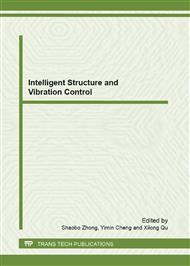p.314
p.319
p.323
p.328
p.333
p.338
p.343
p.348
p.353
Optimize Fundamental Matrix Estimation Based on RANSAC
Abstract:
Fundamental matrix estimation is a central problem in computer vision and forms the basis of tasks such as stereo imaging and structure from motion, and which is especially difficult since it is often based on correspondences that are spoilt by noise and outliers. The Random Sample Consensus (RANSAC) algorithm is a popular tool for robust estimation, primarily due to its ability to tolerate a tremendous fraction of outliers. In this article, we provide an approach for improve of RANSAC that has the benefit of offering fast and accurate RANSAC, and combine the M-estimation algorithm get the fundamental matrix. Experimental results are given that support the adopted approach and demonstrate the algorithm is a practical technique for fundamental matrix estimation.
Info:
Periodical:
Pages:
333-337
Citation:
Online since:
February 2011
Authors:
Keywords:
Price:
Сopyright:
© 2011 Trans Tech Publications Ltd. All Rights Reserved
Share:
Citation:


